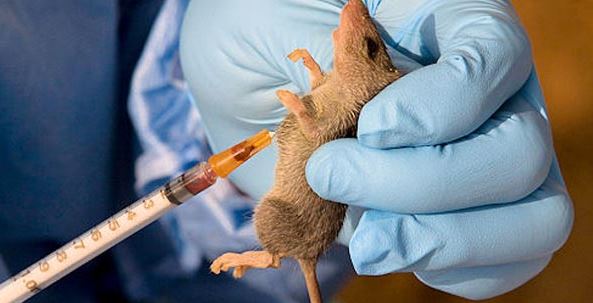Nigeria’s Battle Against Infectious Diseases: A Comprehensive Overview of Lassa Fever, Mpox, and Cerebrospinal Meningitis (January-April 2025)
Nigeria faced a significant public health challenge during the first four months of 2025, grappling with outbreaks of Lassa fever, Mpox (formerly known as monkeypox), and cerebrospinal meningitis (CSM). The Nigeria Centre for Disease Control and Prevention (NCDC) spearheaded the national response, working in close collaboration with state health authorities and international partners. Through robust surveillance, treatment interventions, and community engagement, the NCDC aimed to contain the spread of these diseases and mitigate their impact on the Nigerian population. This detailed summary outlines the epidemiological landscape, control measures implemented, and challenges encountered in managing these outbreaks.
Lassa fever, a viral hemorrhagic fever endemic to West Africa, posed a considerable threat. By epidemiological week 16 (ending April 20, 2025), Nigeria had recorded 4,253 suspected cases, 696 confirmed cases, and 132 deaths, resulting in a case fatality rate (CFR) of 19%. While the NCDC reported a decline in new Lassa fever cases during April, the risk remained substantial, particularly in regions where the disease is endemic. The agency emphasized the need for sustained surveillance, treatment, and community engagement to prevent further resurgence and protect vulnerable populations.
Mpox, another viral disease, also emerged as a concern during this period. From week 1 to week 16, 723 suspected Mpox cases were reported across 35 states and the Federal Capital Territory (FCT). Of these, 136 were confirmed, distributed across 27 states and the FCT. Tragically, three Mpox-related deaths occurred, two in week 10 (Abia and Ebonyi states) and one in Rivers State. The deceased in Rivers State was a young male with pre-existing conditions of HIV and tuberculosis, highlighting the vulnerability of individuals with compromised immune systems. The national CFR for Mpox in 2025 stood at 2.2%. Mpox cases were reported across diverse occupational groups, indicating widespread community transmission and emphasizing the need for infection prevention and control measures in various settings.
The NCDC implemented a multi-pronged approach to combat the Mpox outbreak. An Emergency Operation Centre (EOC) was activated to coordinate the national and sub-national response. Rapid response teams were deployed to high-burden states to bolster local health authorities’ capacity. Essential medical supplies, including intravenous fluids, personal protective equipment (PPE), laboratory consumables, and other critical materials, were strategically distributed to ensure adequate resources for case management. Furthermore, the NCDC optimized five Mpox laboratories across the geopolitical zones to enhance diagnostic capacity and improve sample management, handling, and result reporting. A mortality review meeting was convened to analyze the Mpox-related deaths in Abia, Ebonyi, and Rivers states, aiming to extract valuable lessons and refine response strategies.
Cerebrospinal meningitis (CSM), a bacterial infection affecting the brain and spinal cord, also presented challenges during this period. Data up to week 14 indicated a declining trend in new CSM cases and fatalities. The NCDC implemented a comprehensive strategy encompassing surveillance, treatment, and vaccination to address the CSM outbreak. This approach included dynamic adaptation of interventions based on emerging data, prioritizing community trust and promoting early care-seeking behavior. The NCDC committed to sustaining these efforts until full containment was achieved and state-level ownership of the CSM Incident Action Plan was established.
The NCDC faced significant logistical and resource constraints in its efforts to control these concurrent outbreaks. The vast geographical spread of cases, particularly for Mpox, necessitated the strategic deployment of resources and personnel. Ensuring timely access to essential medical supplies and diagnostic capabilities in affected areas posed a logistical challenge. Furthermore, building community trust and promoting proactive health-seeking behaviors were crucial for effective outbreak control. Addressing misinformation and promoting accurate information about these diseases were essential components of the NCDC’s communication strategy.
The NCDC’s unwavering commitment to transparency and timely information dissemination played a vital role in informing the public and fostering collaboration with stakeholders. Regular press briefings, epidemiological updates, and public health advisories provided crucial insights into the evolving situation. The agency emphasized the importance of continued vigilance and adherence to preventive measures, even as the situation showed signs of improvement. Collaboration with international partners provided technical expertise, resources, and support in strengthening the national response.
In conclusion, Nigeria confronted a complex public health landscape during the first four months of 2025, characterized by concurrent outbreaks of Lassa fever, Mpox, and CSM. The NCDC, in collaboration with state and international partners, implemented a comprehensive strategy encompassing surveillance, treatment, and community engagement to control the spread of these diseases. While challenges remained, particularly in resource allocation and community engagement, the NCDC’s dedication to transparency, data-driven decision-making, and collaborative partnerships proved instrumental in mitigating the impact of these outbreaks. The experiences gained during this period will undoubtedly inform future public health preparedness and response efforts in Nigeria. The agency’s continued vigilance and commitment to strengthening health systems will be crucial in safeguarding public health and preventing future outbreaks. Promoting public awareness and improving access to healthcare services are vital steps in building a more resilient and responsive health system. The NCDC’s commitment to these goals underscores its dedication to protecting the health and well-being of the Nigerian population.


